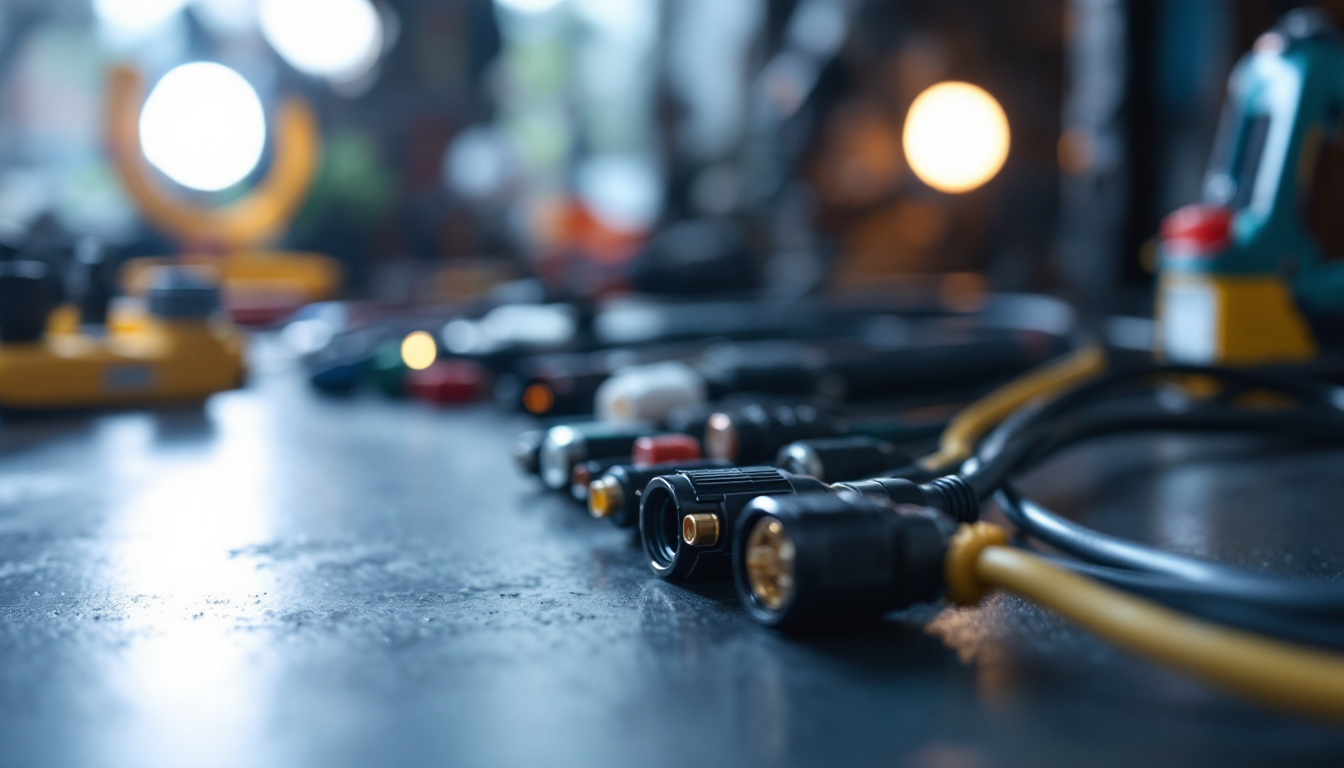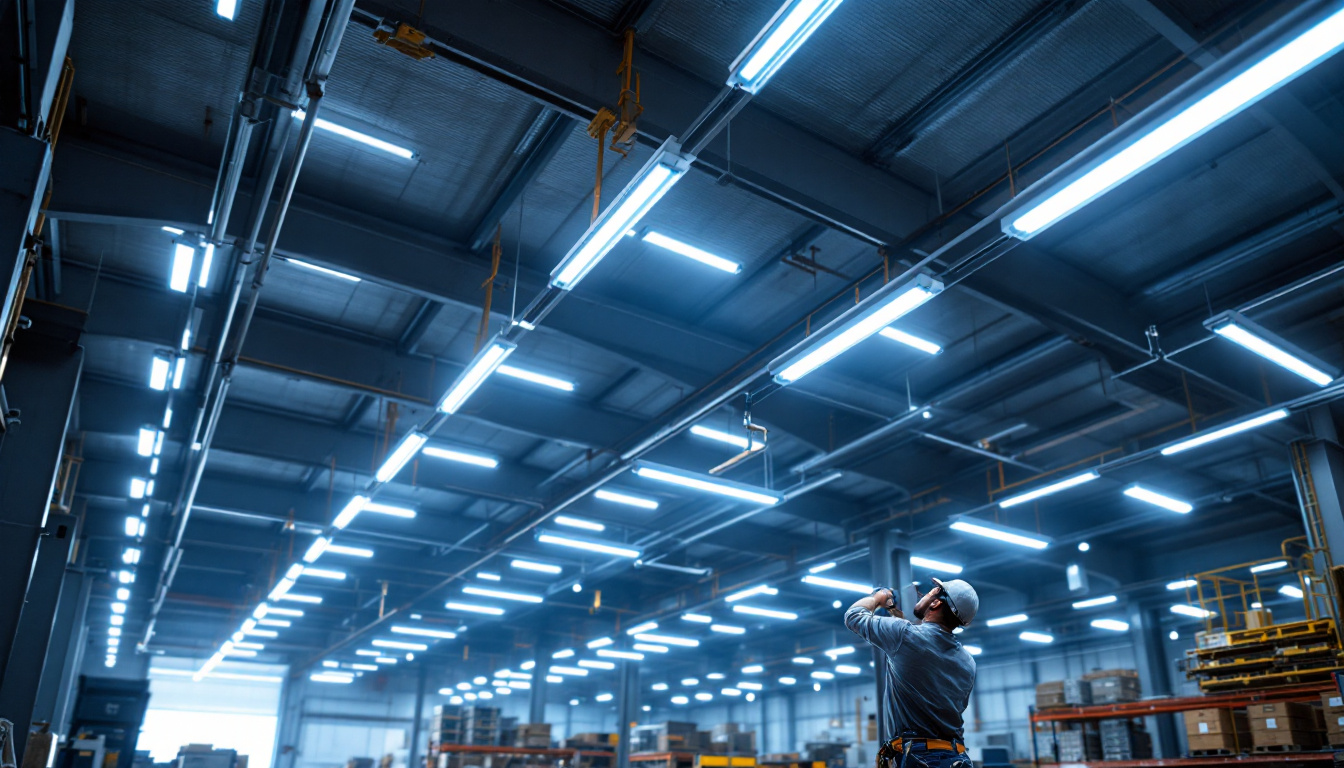
In an age where energy conservation is paramount, the integration of motion lights outside has emerged as a significant factor in enhancing energy efficiency. These innovative lighting solutions not only provide safety and security but also contribute to a more sustainable environment. For lighting contractors, understanding the benefits and implications of motion-activated lighting systems is essential for guiding clients toward more energy-efficient choices.
Motion lights are outdoor lighting fixtures that activate when they detect movement within a certain range. They are commonly used in residential and commercial settings for security purposes, illuminating pathways, driveways, and entryways. Unlike traditional lighting systems that remain on continuously, motion lights provide illumination only when needed, thereby reducing energy consumption. This feature not only contributes to lower electricity bills but also extends the lifespan of the bulbs, making motion lights a cost-effective solution for property owners.
At the core of motion lighting technology are sensors that detect motion through various means. Passive infrared (PIR) sensors are the most common, detecting changes in infrared radiation emitted by objects in their vicinity. When a person or animal moves within the sensor’s range, the light activates, providing instant visibility. This immediate response can deter potential intruders and enhance safety for homeowners and businesses alike.
Another type of sensor, known as microwave sensors, emits microwave pulses and measures the reflection off moving objects. This technology can detect motion through walls and obstacles, making it suitable for various applications. Understanding these functionalities is crucial for lighting contractors when recommending solutions to clients. Additionally, some advanced systems combine both PIR and microwave technologies to create a more comprehensive detection system, ensuring that even the slightest movement is captured, thus maximizing security.
There are several types of motion lights available in the market, each designed for specific applications. Floodlights are ideal for illuminating large areas, while wall-mounted fixtures are perfect for entryways and patios. Solar-powered motion lights have gained popularity for their eco-friendliness, harnessing solar energy to operate without relying on the grid. These solar options not only reduce carbon footprints but also eliminate the need for complex wiring, making installation simpler and more accessible for DIY enthusiasts.
Choosing the right type of motion light depends on the specific needs of the client. Factors such as brightness, range, and installation location should be considered to ensure optimal performance and energy efficiency. Moreover, some motion lights come equipped with adjustable sensitivity settings and timers, allowing users to customize their lighting experience. This flexibility can be particularly beneficial in areas with high foot traffic, where lights might otherwise be triggered unnecessarily. By tailoring the settings, users can achieve a perfect balance between security and convenience, ensuring that their outdoor spaces are well-lit and welcoming without being overly intrusive.
The primary advantage of motion lights is their ability to significantly reduce energy consumption. Traditional outdoor lighting systems often remain on for extended periods, leading to unnecessary energy use. In contrast, motion lights activate only when needed, which can lead to substantial savings on electricity bills.
By utilizing motion-activated lighting, homeowners and businesses can reduce their overall energy usage by up to 80%. This reduction is particularly noticeable in areas that experience low foot traffic, where lights would typically remain off until activated. For lighting contractors, emphasizing these savings can be a compelling selling point when discussing options with clients.
Moreover, the longevity of LED motion lights contributes to energy efficiency. LEDs consume less power and have a longer lifespan compared to traditional incandescent bulbs, further enhancing energy savings over time. This combination of reduced energy usage and longer-lasting products makes motion lights an attractive choice. Additionally, the advancements in sensor technology have made these lights more reliable and responsive, ensuring that they activate only when necessary, thus maximizing energy conservation.
Beyond financial savings, the environmental impact of reduced energy consumption cannot be overlooked. Lower energy usage translates to decreased demand on power plants, which often rely on fossil fuels. By promoting the use of motion lights, lighting contractors can contribute to a greener planet and help clients understand their role in environmental stewardship.
Furthermore, the reduction in light pollution is another significant benefit. Motion lights only illuminate areas when necessary, minimizing the constant glow of outdoor lighting that can disrupt local wildlife and ecosystems. This aspect is particularly important for clients concerned about their environmental footprint. Moreover, the use of motion lights can enhance safety and security without compromising the natural night environment, as they provide illumination only when movement is detected, thereby preserving the darkness that many nocturnal animals rely on for their natural behaviors.
In addition to these benefits, the integration of smart technology with motion lights is becoming increasingly popular. Smart motion lights can be connected to home automation systems, allowing users to customize settings and monitor energy usage through mobile applications. This not only enhances user convenience but also provides valuable insights into energy consumption patterns, empowering homeowners to make informed decisions about their lighting needs. As technology continues to evolve, the potential for energy-efficient lighting solutions will only expand, offering even greater benefits for both consumers and the environment.
In addition to energy efficiency, motion lights provide enhanced security and safety for properties. The sudden illumination of an area when motion is detected can deter potential intruders, making homes and businesses less appealing targets for theft or vandalism.
Studies have shown that well-lit areas are less likely to experience criminal activity. Motion lights serve as a proactive security measure, alerting homeowners and occupants to any movement in their vicinity. For lighting contractors, highlighting the security benefits of motion lights can be an effective strategy for encouraging clients to invest in these systems.
Furthermore, the presence of motion lights can provide peace of mind for residents, especially in neighborhoods with higher crime rates. The combination of energy efficiency and enhanced security makes motion lights a win-win solution for many clients.
Motion lights also play a crucial role in improving visibility around properties. Pathways, driveways, and entryways can be hazardous in the dark, leading to accidents or injuries. By installing motion lights, contractors can ensure that these areas are well-lit when needed, promoting safety for residents and visitors alike.
In commercial settings, proper lighting can enhance the overall customer experience. Well-lit entrances and walkways create a welcoming atmosphere, encouraging foot traffic and improving business operations. For lighting contractors, understanding the dual benefits of safety and aesthetics can help in designing effective lighting solutions.
When recommending motion lights to clients, it is essential for lighting contractors to consider various installation factors. Proper placement and configuration of motion sensors can significantly impact the effectiveness and efficiency of the system.
Motion lights should be strategically placed to cover high-traffic areas while minimizing false triggers. Common locations include driveways, garages, and entry points. By positioning lights at appropriate heights and angles, contractors can maximize coverage and ensure that the lights activate only when necessary.
Additionally, considering the surrounding environment is crucial. Trees, shrubs, and other obstacles can obstruct the sensor’s line of sight, leading to ineffective operation. Contractors should assess the landscape and recommend adjustments to ensure optimal performance.
With the rise of smart home technology, integrating motion lights with smart systems can enhance their functionality. Many modern motion lights can be connected to home automation systems, allowing users to control settings remotely or receive alerts when motion is detected.
This integration not only adds convenience but also allows for further energy savings. Homeowners can customize settings based on their preferences, ensuring that lights are only activated when needed. For lighting contractors, understanding the capabilities of smart motion lights can open up new opportunities for providing comprehensive lighting solutions.
While the initial investment in motion lights may be higher than traditional lighting options, the long-term savings often outweigh the upfront costs. For lighting contractors, presenting a clear cost-benefit analysis can help clients understand the value of investing in energy-efficient solutions.
Motion lights, particularly those equipped with LED technology, may have a higher purchase price compared to incandescent or halogen fixtures. However, the energy savings and reduced maintenance costs associated with longer-lasting bulbs can lead to significant savings over time.
Contractors should also consider the potential for rebates or incentives offered by local utilities for energy-efficient upgrades. Many regions have programs that encourage homeowners to invest in energy-saving technologies, providing financial assistance that can offset initial costs.
Another factor to consider is the maintenance requirements of motion lights. LED bulbs typically last longer than traditional options, reducing the frequency of replacements and associated labor costs. This longevity contributes to the overall cost-effectiveness of motion lighting systems.
Lighting contractors should educate clients on the importance of regular maintenance, such as cleaning sensors and ensuring that motion detection ranges are functioning correctly. By emphasizing the low maintenance requirements of motion lights, contractors can further justify the investment to clients.
Motion lights outside offer a myriad of benefits, from energy efficiency and enhanced security to improved safety and environmental impact. For lighting contractors, understanding the intricacies of motion lighting technology is essential for providing clients with informed recommendations. As energy conservation becomes increasingly important, motion lights represent a practical and effective solution for both residential and commercial applications.
By highlighting the advantages of motion lights, contractors can position themselves as knowledgeable professionals in the field of energy-efficient lighting solutions. The combination of reduced energy consumption, enhanced security, and long-term cost savings makes motion lights an attractive option for clients looking to upgrade their outdoor lighting systems.
In a world that values sustainability and efficiency, motion lights stand out as a smart choice for illuminating outdoor spaces while minimizing energy use. As the demand for energy-efficient solutions continues to grow, lighting contractors have a unique opportunity to lead the way in promoting innovative lighting technologies that benefit both clients and the environment.
Ready to enhance your outdoor lighting projects with energy-efficient motion lights? At LumenWholesale, we provide lighting contractors with the highest quality, spec-grade lighting products at prices that can’t be beaten. Say goodbye to local distributor markups and hello to our extensive selection that meets rigorous industry standards. With free shipping on bulk orders, you can trust that you’re getting premium lighting solutions at the best value — no hidden fees, no compromises. Elevate your lighting game and make a positive impact on energy efficiency and security. Wholesale Lighting at the Best Value is just a click away. Experience the LumenWholesale difference today!

Discover the ultimate guide to wire waterproof connectors tailored for lighting professionals.

Discover how LED linear high bay lights can revolutionize your lighting projects by saving contractors both time and money.

Discover how creating a dedicated lighting corner can enhance your proposals and give you a competitive edge.

Discover the pivotal role of switch single points in enhancing efficiency and safety for lighting contractors.